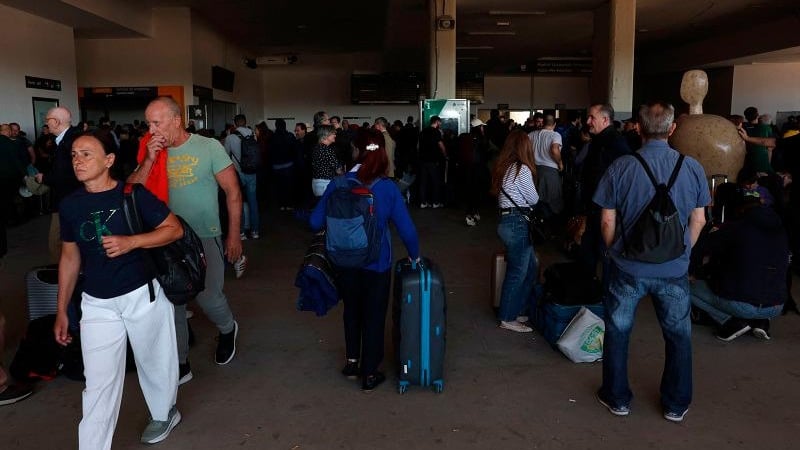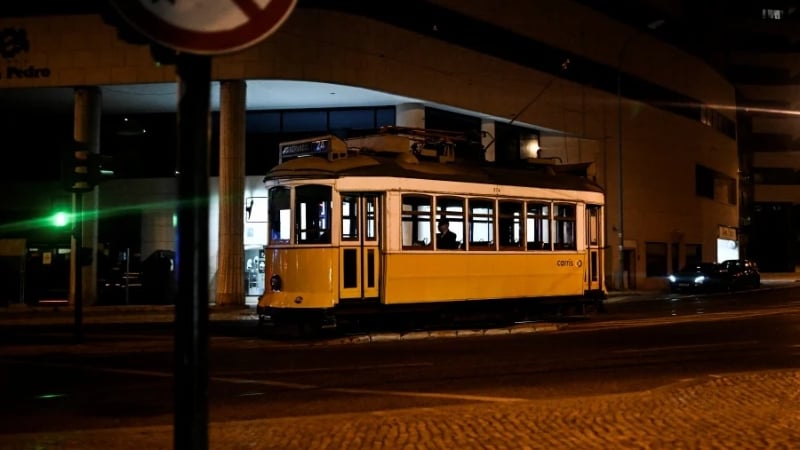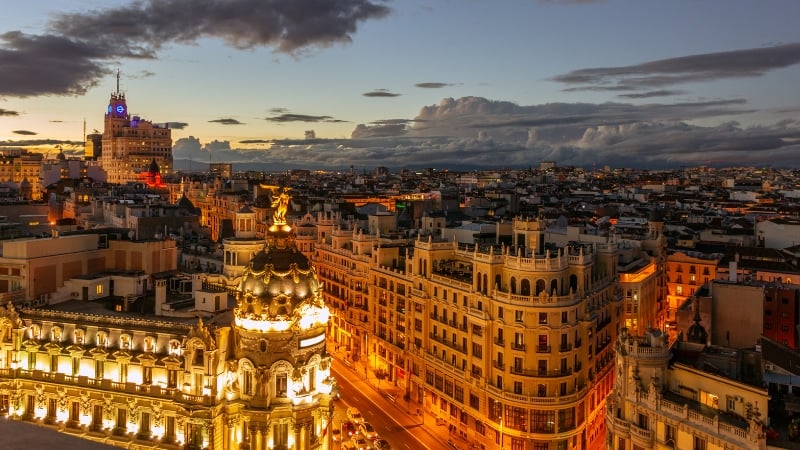Just after 11.30 am Western European Summer Time on 28 Apr 2025, lights flickered and died across Madrid, Barcelona, Lisbon and dozens of other cities and communities. Trains juddered to a halt, airport departure boards went blank and traffic lights fell dark, turning morning commutes into stand-still gridlock. Within minutes, public-transport networks in both countries stopped, elevators froze mid-floor and supermarkets filled with shoppers racing for torches and bottled water.
Also read: Madrid or Barcelona: Which City in Spain Should You See First?
A Grid Collapse of Record Size

Image credit: Miguel Riopa via AFP
Spain’s Interior Ministry quickly declared a national emergency, deploying 30,000 police officers to keep order. Prime Minister Pedro Sánchez later revealed that the country lost 15 gigawatts of generation in only five seconds, or roughly 60 per cent of normal demand: An event grid engineers describe as unprecedented.
Neighbouring Portugal experienced a near-simultaneous failure. Power company REN said 85 of its 89 substations tripped offline, forcing Lisbon’s metro and Porto’s light-rail systems to evacuate passengers. Internet monitoring service Cloudflare noted that Portuguese online traffic fell by 90 per cent; Spain’s dropped by 80 per cent.
Although parts of south-west France briefly blacked out, French operator RTE managed to reroute electricity southwards, helping stabilise the wider European network.
Hospitals, Airports and the Madrid Open Scramble for Back-Up

Image credit: Pierre-Philippe Marcou via AFP
Hospitals in Madrid and Catalonia cancelled elective procedures and switched to generators, reserving scarce power for intensive-care units. Across the capital, Atocha and Chamartín stations disgorged stranded passengers, many of whom set off on foot or simply waited outside in the spring sunshine. Tournament officials at the Madrid Open suspended play, players returning to pitch-black locker rooms lit only by mobile-phone torches.
Airports fared slightly better: Lisbon and Madrid-Barajas switched to emergency supplies, though dozens of flights were delayed as check-in systems rebooted. Meanwhile, Spain’s rail operator RENFE reported 35,000 travellers evacuated from stalled trains, with another eleven sets still marooned in rural areas well into the evening.
The Mystery Trigger: Weather, Wiring or Something Else?

Image credit: AFP
By nightfall, engineers had restored roughly two-thirds of Spain’s supply and 95 per cent of Portugal’s, yet no single explanation satisfied all parties. Madrid’s grid operator REE pointed to a sudden failure on the high-voltage link with France, causing Spanish and French systems to decouple in a violent chain reaction.
Lisbon officials, meanwhile, highlighted an unusual atmospheric phenomenon: rapid interior temperature swings that set overhead lines vibrating, unsettling frequency across the peninsula. Both governments dismissed social-media chatter about sabotage or cyberattack, though Spain’s National Security Council and NATO representatives have requested detailed reports.
Why Renewable Champions Still Need a Robust Backbone

Image credit: Jorisvo via Getty Images
Spain now sources over half its electricity from wind and solar, a point of national pride, but also a technical challenge. Renewable output varies by the minute, so operators rely on interconnectors and sophisticated electronics to keep frequency anchored at 50 hertz. When a disturbance trips several generators at once, protective relays shed additional load to save equipment, producing the large-scale “cascading disconnections” seen yesterday.
Experts stress that tighter European links generally improve resilience, allowing countries to share spare capacity. Yet, as this week showed, the same ties can also transmit trouble at lightning speed. Investing in grid-balancing technology, from battery farms to flywheels, will be critical as the continent pushes towards its 2030 clean-energy targets.
Practical Advice for Travellers in the Days Ahead
- Check transport updates before you move: Trains and metros are running a reduced timetable while signalling systems are recalibrated. Airlines suggest arriving earlier than usual as airports clear backlogs.
- Carry cash: Many ATMs were knocked offline and card networks may experience intermittent outages during the restart.
- Plan for sporadic mobile coverage: Telecom towers reboot in stages; downloading offline maps and boarding passes is wise.
- Expect busy roads: Some traffic lights remain in manual mode, so add buffer time if you are driving between cities or to the airport.
A Reminder of Europe’s Delicate Power Web

Image credit: VanderWolf Images via Getty Images
Continental black-outs of this magnitude are rare: the last comparable event swept Italy in 2003 and ricocheted across western Europe in 2006. Yesterday’s shutdown joins that short list, underlining how finely balanced modern grids have become.
For travellers, the good news is that lights are coming back quickly and essential services are prioritised. For policymakers, engineers and energy companies, however, the outage is a stark prompt to accelerate upgrades, because the next heatwave, cold snap or technical fault could strike just as suddenly.
Also read: The Death of Pope Francis: What Does It Mean for Travellers?





